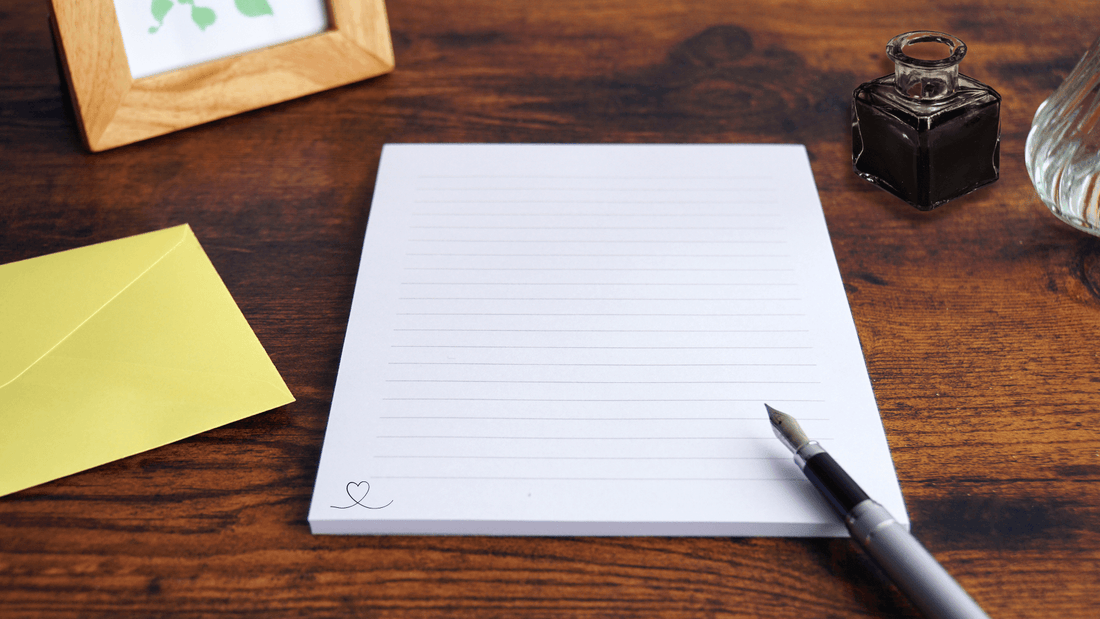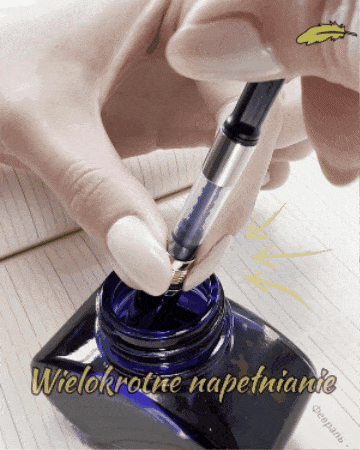
How to Refill a Fountain Pen - A Complete Step-by-Step Guide
Share
For many, owning a fountain pen is a symbol of elegance and prestige. However, to enjoy its beauty and usefulness, proper ink refilling is essential. In this article, we'll provide a simple guide on how to properly refill a fountain pen for smooth and comfortable writing.
Selecting ink or cartridges
To fill a fountain pen, we can use bottled ink or special cartridges designed for fountain pens.

Ink filling
Filling directly through the nib
The fountain pen contains an ink plunger. Before filling the pen, remove the plunger and rinse it with water. If the pen and plunger are new, you can skip the rinsing step. Once the plunger is in place, you can begin filling. First, push the plunger all the way down by turning the plunger tip. Then, dip the pen nib into the ink bottle and turn the plunger tip until the plunger draws in the ink. Turn until you feel resistance and the plunger is fully filled. Your pen is filled and ready to write.

Filling the piston/converter from the ink bottle
A piston, also known as a converter, for a fountain pen is simply a reusable cartridge. In a cartridge, ink flows by gravity into the nib, and in a piston, you can provide additional assistance by tightening the piston. Remove the piston from the pen if it's been used before, rinse it with water, and bring the piston all the way down by turning it until it stops. Dip it in the ink bottle and draw ink by turning the piston counterclockwise until you feel resistance. Insert the plunger into the pen and gently tighten the plunger to allow the ink to flow into the nib. You can also hold the pen and wait for the ink to flow by gravity. After a short while, the pen should be ready to write.

Filling the plunger/converter with a plunger needle
For this option, you'll need a needle with a plunger , which you can purchase in our store. Prepare the clean plunger for filling. This time, unscrew the plunger all the way to the top. Dip the needle into the ink bottle and draw in the ink. Then, inject the ink into the converter – repeat this process once more to fill the converter to its maximum capacity. Insert the plunger into the pen and gently tighten the plunger to allow the ink to flow into the nib. You can also simply hold the pen and wait for the ink to flow by gravity. After a moment, the pen should be ready to write. The advantage of this filling method is that your hands won't get dirty with ink.


Loading cartridges

Cartridges are a convenient solution. Each cartridge has a metal ball stopper at the inlet. To insert the cartridge correctly, the ball must be pushed into the cartridge to open the inlet. If you purchased a fountain pen with a plunger, remove the plunger from the pen. Instead of the plunger, insert the cartridge and press it in until you hear a click. The characteristic click is simply the ball being pushed into the cartridge. Hold the pen vertically for about a minute and wait for the ink to flow into the nib. The pen should be ready to write.

Problems with filling
The pen doesn't want to write at all
If after a minute of holding the pen vertically, the pen refuses to write, try flicking it vertically down onto a piece of paper, like a mercury thermometer. On the second or third flick, a drop of ink should fly out. The pen should then write.
Cartridges do not fit or are loose
Check that you've purchased the correct cartridges. Some of our pens, such as the Classic Script, accept cartridges with an internal diameter of 2.3-2.6 mm, while others, such as the Silver Moon, accept cartridges with an internal diameter of 3.4 mm. Each pen should be labeled with the cartridge size it fits.
The pen interrupts
If your pen is intermittent, it may mean the ink channel to the nib is clogged. To remedy this, you can use the plunger and try sucking it in a few times. A mixture of water and a drop of dishwashing liquid and soap through the nib. After each use, pour the mixture directly from the plunger. Alternatively, you can try flushing the entire system with this mixture. Finally, rinse the converter and pen with clean water in the same manner.
If you're using a plunger, the problem may be caused by an air bubble below the ink in the plunger. Simply tap the plunger with your fingernail to force the ink to flow to the bottom.
We hope the guide helped :)
The Feather Team ❤️
